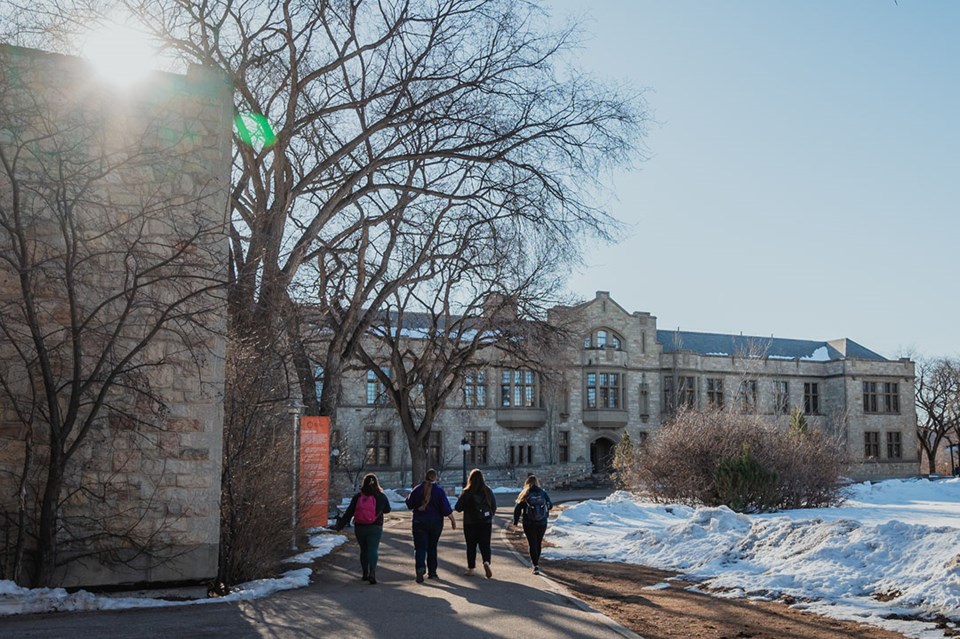SASKATOON — The University of Saskatchewan (USask) has announced tuition rates for the 2024-25 academic year, implementing an increase that will focus on continuing to provide high quality academic programming, and to further invest in student supports and resources.
For the 2024/25 academic year, the tuition change is a weighted average increase of 3.83 per cent across undergraduate and graduate programs. Course and program-specific tuition information can be found on the tuition and fees website.
For example, undergraduate tuition rates in the College of Arts and Science, where nearly half of USask students are enrolled, will change by four per cent on average. This will mean that the average domestic undergraduate Bachelor of Arts student enrolled in 30 credit units will pay $7,547 in the 2024/25 academic year, compared to $7,257 in the previous year. This is about $290 more in total from last year, or about $9 more per week across Fall and Winter terms.
Tuition revenue is directed to maintain and enhance the student experience, and is invested in teaching, enrichment of students’ experiential and online learning, research opportunities, support services and financial aid for students.
“Tuition is an essential part of ensuring we can continue to provide high-quality academic programming and support services for students during their university journey,” said Dr. Airini (PhD), provost and vice-president academic. “This tuition rate increase supports the ongoing operations of the university while enabling enrichment of the student experience and supporting our academic mission to foster the leaders of tomorrow.”
USask examines tuition rates at peer institutions in the U15 Group of Canadian Research Universities each year during its annual tuition review and tuition-setting process. Tuition rates are considered within the context of five principles at USask, as per the Tuition and Fees Authorization Policy:
- Comparability to similar programs;
- Accessibility and affordability for students;
- Enabling the high quality of programs;
- Predictability of tuition to support longer-term planning for students; and
- Transparency through consultation with students to ensure a common understanding of tuition.
“USask recognizes that changes to tuition can be challenging,” said Airini. “Supports we intentionally put into place are to help students continue to focus on success in their studies.”
The university aims to support those with financial need to mitigate the impact of economic barriers for students. Each year, the university invests more than $57 million in the form of scholarships, bursaries, tuition waivers, and crisis aid for domestic and international undergraduate and graduate students.
In the coming year, needs-based funding in the amount of $1 million will be set aside for financial support of continuing international undergraduate and master’s students. The support provided to international students through these mechanisms is approximately 10 per cent of the overall new tuition revenue stemming from the increases to international undergraduate and master’s student tuition.
USask prioritizes having conversations with students and campus leaders, including deans and executive directors, that inform tuition recommendations every year. Beginning in fall 2021, USask launched new tuition consultation initiatives with students, offering learning modules designed to share information on university finances, budgeting, and tuition setting. The university also seeks student perspectives on academic programming and student experience through both a survey and meetings within their colleges and schools. Information regarding the tuition consultation process and related documents can be found here.
As in previous years, USask conducted conversations with students about a multi-year plan for both domestic and international tuition rates. The top two areas of importance identified by students were investments in open access textbooks and digital online resources, alongside funding for scholarships and bursaries. These broad areas are the target of significant incremental investment by the university.
“We remain committed to engaging with students to ensure their thoughts and insights are included in tuition decisions,” said Dr. Patti McDougall (PhD), USask’s deputy provost and co-chair of the university’s tuition advisory group. “We are grateful to all students for their input recommendations of areas for university investment that will help them to achieve their academic goals. We look forward to continued work together in future years.”
In 2021, USask signed The Saskatchewan Post-Secondary Multi-Year Operating Funding Memorandum of Understanding (MOU) with the Government of Saskatchewan. This has created the opportunity for overall tuition stability across several years and has enhanced the predictability of tuition decisions. As the current agreement with the Government of Saskatchewan comes to an end in 2024/25, USask will begin discussions with the provincial government on a future agreement.
“Students are our highest priority, and we will continue to work with all students to ensure their bold, ambitious needs – academic, financial and otherwise – are heard and supported wherever possible,” said Airini.
USask recognizes the importance of predictability in tuition rates for students and has taken steps to improve predictability. USask is fortunate that the provincial operating grant is a firm foundation for enabling the university to continue to deliver high-quality programming and to provide a wide array of student supports. However, financial needs and obligations exceed this amount, and tuition continues to be a necessary source of revenue. Tuition revenue constitutes about 18 per cent of the university’s comprehensive revenue.
Tuition rates and student fees for all undergraduate and graduate programs can be found online at usask.ca/tuition.
— Submitted by USask Media Relations




